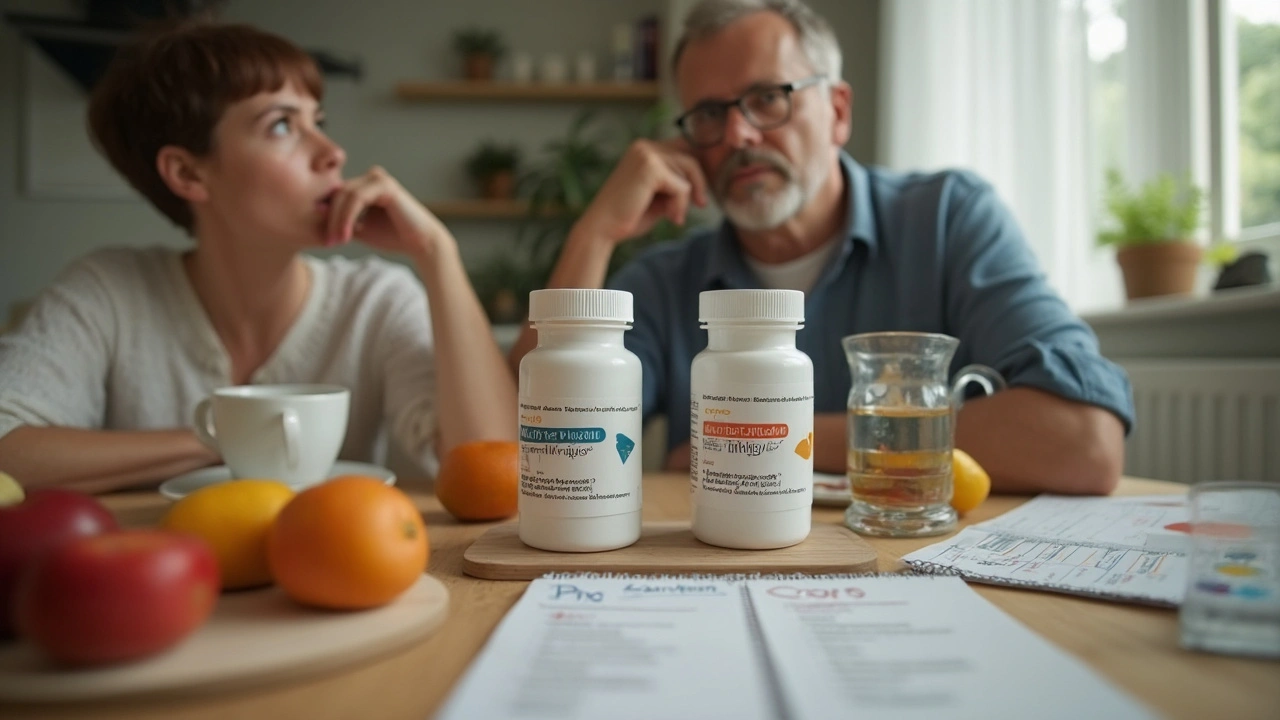Acarbose: Practical Guide for Managing Blood Sugar
Acarbose is an oral medicine used to lower blood sugar after meals in people with type 2 diabetes. It works by blocking enzymes in the gut that break down carbs, so glucose enters the bloodstream more slowly. Taking acarbose at the start of a meal helps reduce blood sugar spikes and can be added to other diabetes drugs when diet, exercise, and metformin alone are not enough.
How to take it: start with a small dose to limit gas and diarrhea, usually 25 mg with the first bite of each main meal. After a few weeks your doctor may increase to 50–100 mg three times daily if needed. Swallow tablets whole; do not take between meals. If you miss a dose, skip it—don’t double up.
Side effects: the most common problems are flatulence, bloating, abdominal pain, and diarrhea. These come from undigested carbs reaching the colon and are often worse at the beginning. Reducing portion size of starchy foods and increasing dose slowly cuts symptoms. Serious liver problems are rare but reported at high doses, so your doctor may check liver tests during treatment.
Hypoglycemia risk and treatment: acarbose by itself rarely causes low blood sugar, but the risk rises when you combine it with insulin or sulfonylureas. If you get hypoglycemia while on acarbose, treat with pure glucose (tablets or gel). Sucrose (table sugar, honey, fruit juice) will not work well because acarbose blocks sucrose digestion. Always carry glucose tablets if you use acarbose plus insulin or a sulfonylurea.
Who should avoid acarbose
Don’t use acarbose if you have inflammatory bowel disease, intestinal obstruction, chronic intestinal inflammation, or liver disease. It’s not for type 1 diabetes or diabetic ketoacidosis. Tell your doctor about pregnancy or breastfeeding; they will advise safer options. Also mention any other medicines, especially other diabetes drugs.
Practical tips and monitoring
Check your blood sugar regularly to see if acarbose helps your post-meal readings. Aim to measure 1–2 hours after meals to assess spikes. If gastrointestinal side effects bother you, try a lower-carb meal, smaller portions, or slower dose increases. Report persistent abdominal pain, jaundice, or unusual tiredness—these could signal liver issues. Keep a list of symptoms and drug changes to discuss at follow-up visits.
Acarbose can be a useful tool for controlling post-meal glucose spikes when used correctly. It’s cheap, works locally in the gut, and pairs with many diabetes treatments. Ask your healthcare provider if acarbose fits your plan, and be clear on how to treat low blood sugar while on it.
Storage and cost: keep tablets in a dry place at room temperature. Acarbose is available as generic acarbose and brands like Precose; generics usually cost less. Insurance may cover it, but check with your plan. If side effects make it intolerable, other options to lower post-meal glucose include dietary carbs control, rapid-acting insulin, or drugs that work systemically—talk with your clinician to weigh benefits and risks.
Start slow, test often, and keep glucose tablets handy. Write down patterns of after-meal readings to show your doctor and adjust doses.

